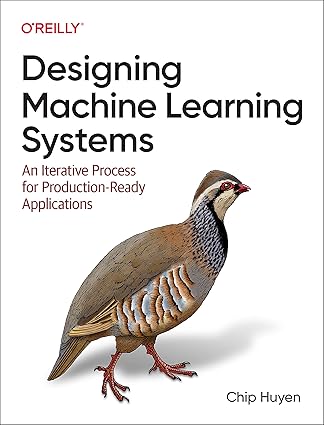Designing Machine Learning Systems: An Iterative Process for Production-Ready Applications
Introduction
The development of machine learning (ML) systems has become increasingly critical for businesses across various industries. However, transitioning from research prototypes to robust, production-ready applications is a complex and challenging process. This white paper outlines an iterative approach for designing and deploying ML systems that are both effective and scalable.
1. Problem Definition and Data Collection
-
Clear Problem Statement: Define the specific problem the ML system is intended to solve. This should be accompanied by a clear understanding of the desired outcomes and metrics for success.
-
Data Acquisition: Gather relevant and high-quality data. Consider factors such as data volume, variety, velocity, veracity, and value. Explore both internal and external data sources.
2. Data Preparation and Exploration
-
Data Cleaning: Handle missing values, outliers, and inconsistencies to ensure data quality.
-
Data Transformation: Convert data into a suitable format for ML algorithms, such as normalization or feature engineering.
-
Exploratory Data Analysis (EDA): Gain insights into the data through visualization techniques, statistical analysis, and feature importance.
3. Feature Engineering
-
Feature Selection: Identify the most relevant features that contribute to the model's performance.
-
Feature Creation: Derive new features from existing ones to capture hidden patterns.
-
Feature Transformation: Apply transformations to improve model performance, such as scaling or encoding categorical variables.
4. Model Selection and Training
-
Algorithm Selection: Choose appropriate ML algorithms based on the problem type (e.g., classification, regression, clustering) and data characteristics.
-
Hyperparameter Tuning: Optimize model performance by adjusting hyperparameters using techniques like grid search or random search.
-
Model Training: Train the selected model on the prepared dataset.
5. Model Evaluation
-
Metrics Selection: Choose relevant metrics to evaluate model performance (e.g., accuracy, precision, recall, F1-score, mean squared error).
-
Cross-Validation: Assess model generalization by splitting the data into training and testing sets and performing multiple iterations.
-
Model Comparison: Compare the performance of different models to select the best candidate.
6. Model Deployment and Monitoring
-
Deployment: Integrate the selected model into the production environment.
-
Monitoring: Continuously monitor the model's performance in real-world conditions.
-
Model Retraining: Re-train the model periodically as new data becomes available or performance degrades.
7. Iteration and Refinement
-
Feedback Loop: Gather feedback from users and stakeholders to identify areas for improvement.
-
Model Updates: Incorporate new insights and data to refine the model and enhance its performance.
-
Continuous Learning: Embrace a culture of continuous learning and experimentation to stay ahead of evolving trends and challenges.
Conclusion
Designing and deploying ML systems is an iterative process that requires careful consideration of various factors. By following the outlined steps, organizations can develop robust and effective ML applications that deliver value and drive business outcomes. It is essential to approach ML development with a focus on collaboration, experimentation, and continuous improvement.
References
Note: These are some general references to get you started. For a more comprehensive list, consider consulting specific textbooks, research papers, or online resources related to machine learning and data science. Contact ias-research.com fordetails.
Books
-
Hands-On Machine Learning with Scikit-Learn, Keras, and TensorFlow: By Aurélien Géron
-
Introduction to Machine Learning: By Ethem Alpaydın
-
Machine Learning: A Probabilistic Perspective: By Kevin P. Murphy
-
The Elements of Statistical Learning: By Trevor Hastie, Robert Tibshirani, and Jerome Friedman
Online Courses and Tutorials
-
Coursera: Machine Learning by Andrew Ng
-
Fast.ai: Deep Learning Courses
-
Kaggle: Machine Learning Tutorials and Competitions
-
DataCamp: Interactive Data Science and Machine Learning Courses
Research Papers and Articles
-
Nature: [Relevant machine learning research papers]
-
Science: [Relevant machine learning research papers]
-
arXiv: [Preprint server for research papers, including machine learning]
-
Towards Data Science: Blog posts and tutorials on data science and machine learning
Specific Topics
-
Deep Learning: Deep Learning (Goodfellow, Bengio, and Courville)
-
Natural Language Processing: Natural Language Processing (Jurafsky and Martin)
-
Computer Vision: Computer Vision: Algorithms and Applications (Szeliski)
Please note that these references are a starting point. It's essential to tailor your reading list based on your specific needs and interests within the field of machine learning.



